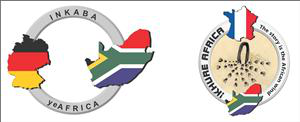Speaker
Mr
Derick Forbanka
(DZE University of Fort Hare)
Description
Fork-marked dwarf lemurs (Phaner) are nocturnal strepsirhines endemic to Madagascar. Lemur systematic has witnessed the naming of many new species in the last decade. Four Phaner species have been recognized based on slight variations in pelage colouration, and their occupation of discontinuous ranges in Madagascar. Given that these lemurs are nocturnal, according to the Recognition Concept of Species, mate recognition cannot be by visual characteristics alone. The Recognition Concept of Species is the means by which organisms attract and recognize each other referred to as the Specific Mate Recognition Systems (SMRS). One of the SMRS that have been widely followed and proven fruitful in nocturnal primates is vocalization. Each species has particular loud call common to both sexes and used to advertise their presence to companions as well as rivals. Loud calls are species specific and constant across geographical ranges. Therefore, loud calls provide a diagnostic tool for the identification of new species. However, loud call species specificity has never been tested in the fork-marked dwarf lemurs. Our project was underpinned by the Recognition Concept. In contrast to many other lemurs, Phaner are known to rely less on visual signals and recognize each other principally by means of auditory and olfactory signals. They possess a rich repertoire of loud calls related to contact and alarm. We applied comparative bioacoustics, a tool successfully used to discriminate other nocturnal, cryptic species, to investigate whether species of fork-marked dwarf lemurs can be recognized noninvasively on the basis of their loud calls. Loud calls of five populations of forked-marked dwarf lemurs corresponding to the four recognized species were recorded along existing trails in the night with the aid of a professional sound recorder and directional microphone. Calls were analyzed using Sound Analysis Pro 2011 and the data subjected to multivariate analysis to produce a dendrogram and an ordination diagram based on Principal Component Analysis (PCA). Calls from all studied populations showed distinctive clusters based on the described species of Phaner. These results support pelage colouration and reflect species specificity. Differences in acoustic structure may be caused by genetic divergence, divergence in size and mass of laryngeal structure, the rate at which vocal cords open and close as well in muscles for breathing and vocal production. Equally, specific acoustic adaptation to the environment, genetic drift, founder effects and selection factors may have played a role in the evolution of species specificity in the loud calls of Phaner. Loud call fingerprinting may therefore be used as a non-invasive tool for species diagnosis and discrimination in Phaner. In addition, it offers an easy and inexpensive way to determine species in the field as well as in the laboratory.
Primary author
Mr
Derick Forbanka
(DZE University of Fort Hare)
Co-author
Prof.
Judith Masters
(University of Fort Hare)

